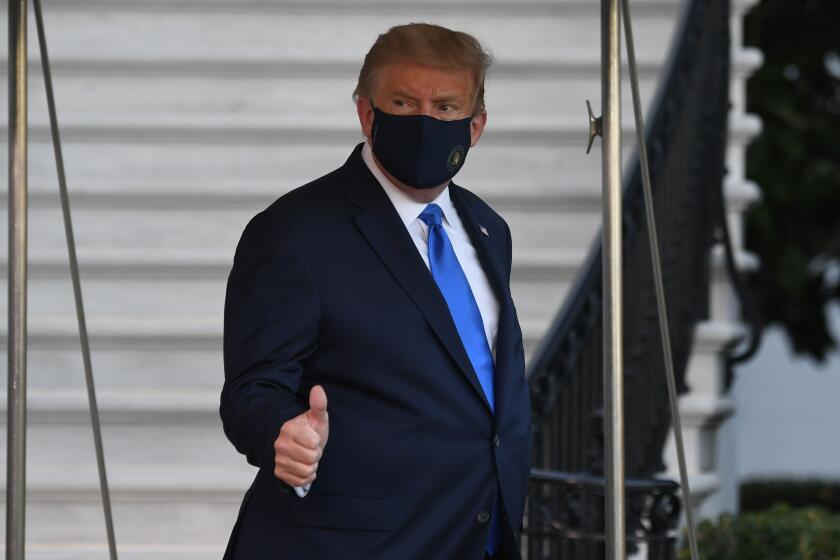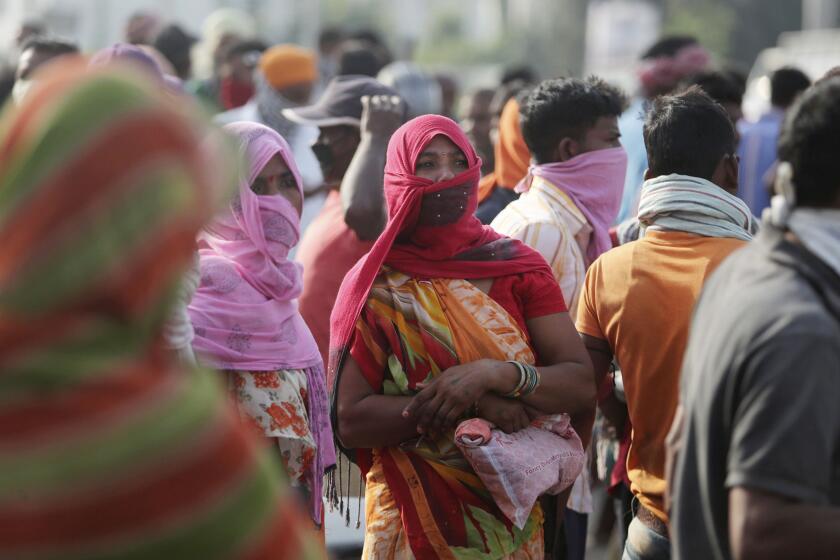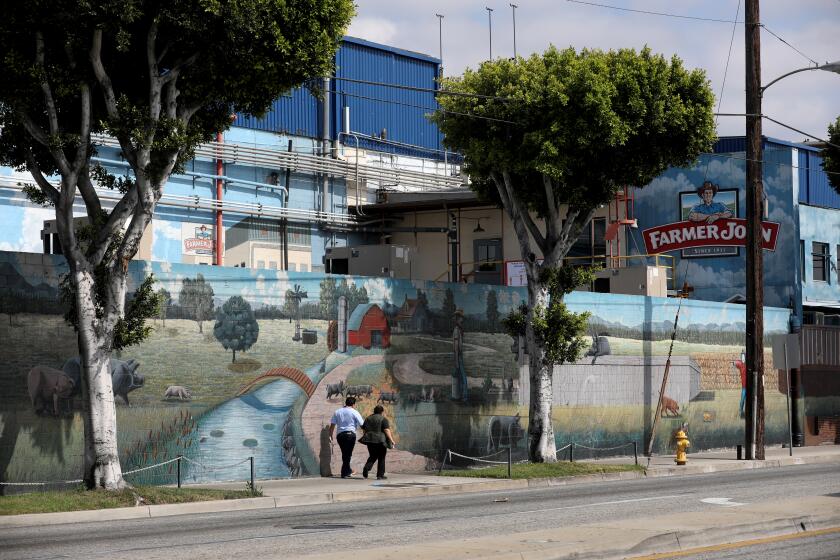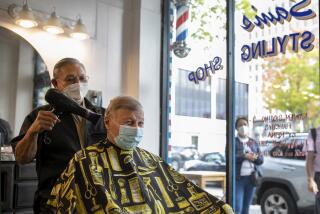Largest study of COVID-19 transmission highlights essential role of super-spreaders

- Share via
SINGAPORE — In the bleak ranking of worst COVID-19 outbreaks, the United States, with 7.2 million infections, is likely to be eclipsed only by India, which has 1 million fewer cases but is catching up fast.
Yet parts of India have led the world in one aspect of the pandemic response: contact tracing — the labor-intensive, time-sensitive, painstaking work of identifying people who were exposed to a known infected person.
Extensive contact tracing in two southern Indian states offers the strongest evidence yet that a few super-spreading individuals are responsible for a disproportionate share of new coronavirus infections, according to a study published Wednesday in the journal Science. It also suggests that children are more efficient transmitters of the virus than widely believed.
A team of Indian and U.S. researchers examined data from 575,071 individuals who were tested after coming into contact with 84,965 people with confirmed cases of COVID-19. That’s an average of seven contacts per case, and a cohort more than 10 times larger than in a previous study from South Korea that mapped how the virus was transmitted.
“It’s the largest epidemiological study anywhere on COVID by far,” said the lead author, Ramanan Laxminarayan of the Center for Disease Dynamics, Economics and Policy, in New Delhi.
Laxminarayan and his colleagues found that just 8% of people with COVID-19 accounted for 60% of the new infections observed among the contacts. Meanwhile, 7 out of 10 COVID-19 patients were not linked to any new cases.
President Trump was hospitalized at Water Reed on Friday evening after suffering symptoms of COVID-19. Vice President Mike Pence tested negative.
The finding underscores the essential role of super-spreaders in the COVID-19 pandemic: One individual or event, such as in a poorly ventilated indoor space, can trigger a high number of new infections, while others might not transmit the virus at all.
In the new study, researchers tracked down 78 people who had shared a bus or train with one of eight known infected people and sat within three rows of that person for more than six hours. Health workers visited these contacts at their homes to conduct follow-up screenings and determined that nearly 80% of them had contracted the coronavirus.
By contrast, people who were known to be exposed to infected individuals in lower-risk environments — such as being in the same room but more than three feet away — became infected only 1.6% of the time.
“Super-spreading events are the rule rather than the exception,” Laxminarayan said. “It has lots of implications for modeling COVID, for how to keep places safe.”
The Centers for Disease Control and Prevention said new guidance that warned about the dangers of coronavirus transmission via aerosols was posted by mistake.
The study suggests that super-spreading events are influenced by behavior — that proximity to an infected person, length of contact and ambient conditions determine the level of risk. It doesn’t examine whether some infected people spread the virus more efficiently because of biological factors, a question scientists are still trying to answer.
The results could help guide safety measures in places such as gyms, churches and choir practice spaces that have been locations for previous super-spreading events.
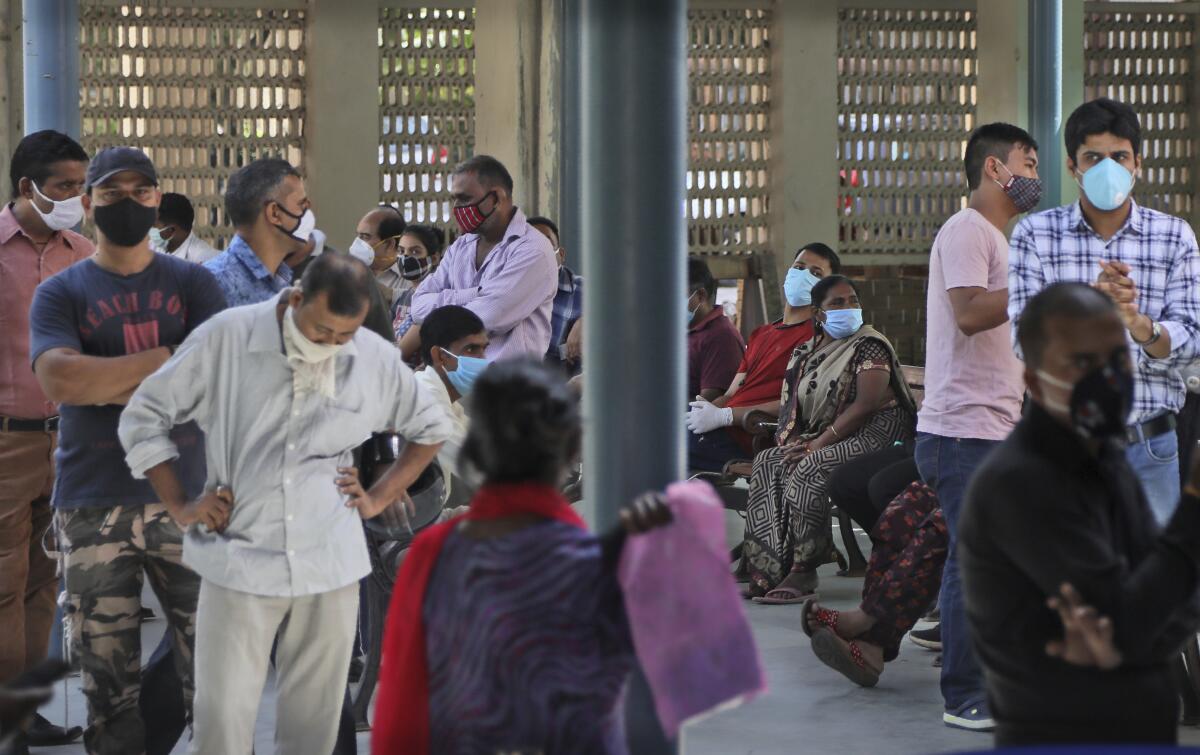
The study also found that although children younger than 17 were the least likely to die of COVID-19, they transmitted the virus at rates similar to the rest of the population, underscoring the idea that the disease doesn’t spare young people. One data point in particular holds implications for reopening schools: Children ages 5 to 17 passed the virus to 18% of close contacts their own age.
Antonio Salas, a Spanish researcher who has investigated the role of super-spreaders in the pandemic, said the study’s findings regarding children were important in light of “previous reports suggesting a minor role of children in the pandemic.”
“National policies on how to proceed with children in schools and other social activities could change dramatically if the scientific evidence underpins the idea that children can infect as efficiently as adults, and even more, they could also behave as super-spreaders,” said Salas, who was not involved in the India study.
As India’s coronavirus caseload has doubled over the past month, from 3 million to more than 6 million, the study authors said their work showed one strength of the country’s response: the ability to mobilize large numbers of health workers and civil servants to conduct contact tracing, identify high-risk individuals and closely track their cases.
India’s coronavirus tally has reached 6 million cases, double the total recorded barely a month ago and second overall only to the U.S.
The two Indian states in the study, Andhra Pradesh and Tamil Nadu, have a combined population of 128 million and boast some of the largest healthcare workforces and highest levels of public health spending in the country. Both turned to disease-surveillance networks put in place years ago during the AIDS epidemic to make house-to-house checks at levels unseen elsewhere in the world.
In Tamil Nadu, which includes the coastal metropolis of Chennai (formerly known as Madras), thousands of public and private healthcare workers were trained as contact tracers and health surveillance officers. The state had experience identifying at-risk populations from its battle against AIDS, which struck Tamil Nadu harder than almost anywhere else in the country.
Once a person tested positive for the coronavirus, a public health worker interviewed them by phone about where they’d been and whom they’d met over the previous two weeks. Immediate family members were tested and isolated right away; others were located through phone calls and text messages.
Nearly all the contacts traced were people known to the infected person, so many strangers were missed. Still, in Chennai, health workers located and tested an average of 17 contacts per infected person through Aug. 1.
Although contact tracing is crucial to identifying, isolating and testing those vulnerable to infection — and helped countries such as South Korea avoid disastrous outbreaks — an effective system has eluded most of the U.S. because of shortages of trained staff and funding.
L.A. County’s contact-tracing system has repeatedly failed to alert officials to outbreaks at workplaces, allowing COVID-19 to continue to spread.
L.A. County’s contact tracing program has failed to stop major outbreaks and been dogged by language barriers, slow turnaround times for test results and inaccurate information from patients. The county has hired about 2,600 contact tracers to cover a population of 10 million. Madurai, a semi-urban district in Tamil Nadu, had an equal number of health workers covering a population one-third the size, said Chandra Mohan, a state official who helped oversee the response and was a co-author of the study.
Although poorer nations now account for most of the world’s COVID-19 cases, much of what is known about how the coronavirus is transmitted has come from relatively small-scale studies in China, the U.S. and the wealthy nations of Europe.
India imposed one of the strictest lockdowns anywhere in late March, measures that the new study found slowed the spread of the virus considerably. As Prime Minister Narendra Modi’s government has eased restrictions to revive the economy, the disease, not surprisingly, has resurged. But Mohan said the contact tracing program saved lives.
Tamil Nadu has recorded nearly 600,000 infections and 9,400 deaths, which translates to 13 deaths per 100,000 people. The U.S. COVID-19 mortality rate is roughly 62 per 100,000.
“What is required is clarity of thought and the ability to mobilize resources and put them to use,” Mohan said. “I suppose a good governance structure makes the difference between what can be done and what cannot be done.”
More to Read
Sign up for Essential California
The most important California stories and recommendations in your inbox every morning.
You may occasionally receive promotional content from the Los Angeles Times.
